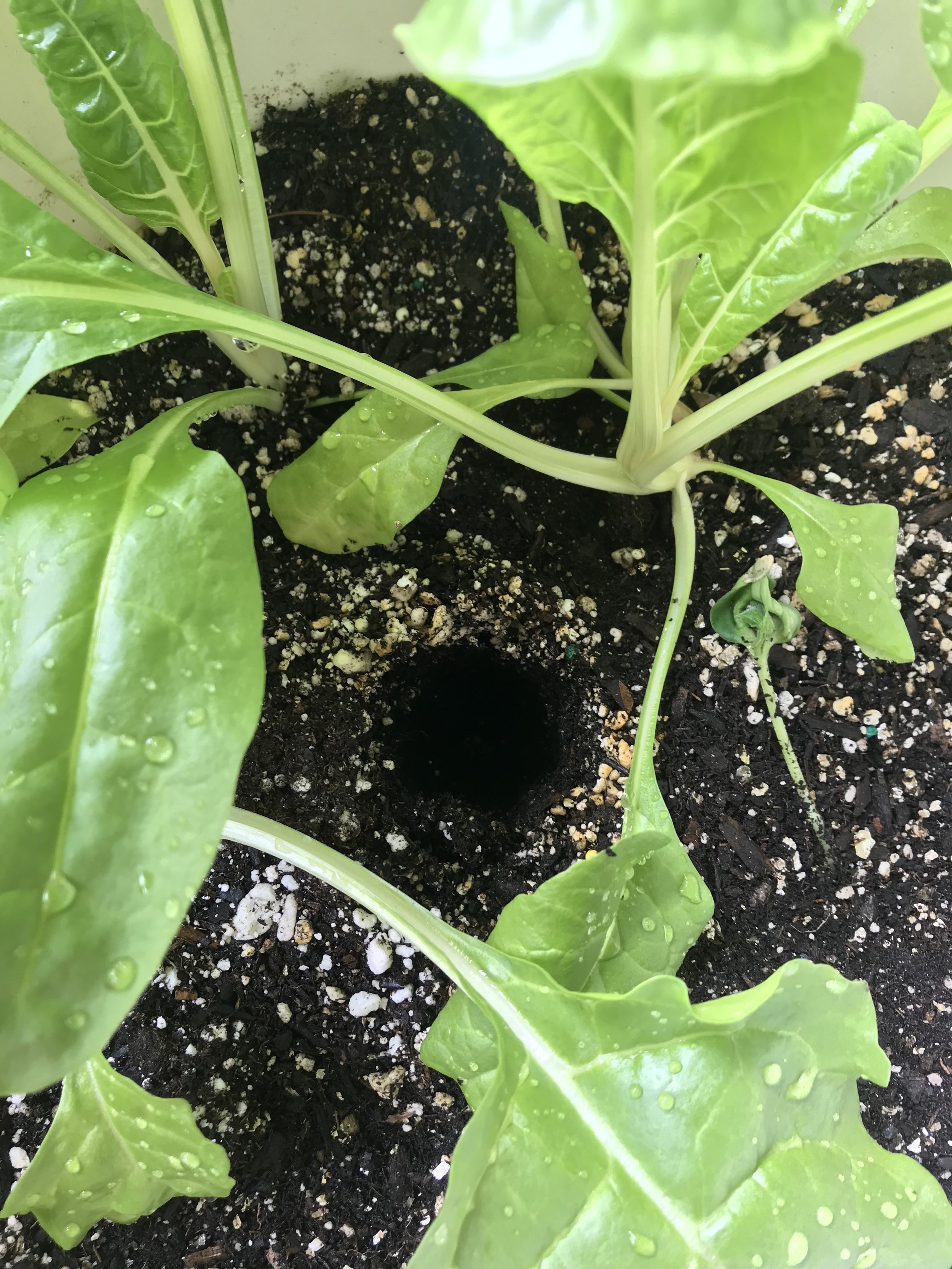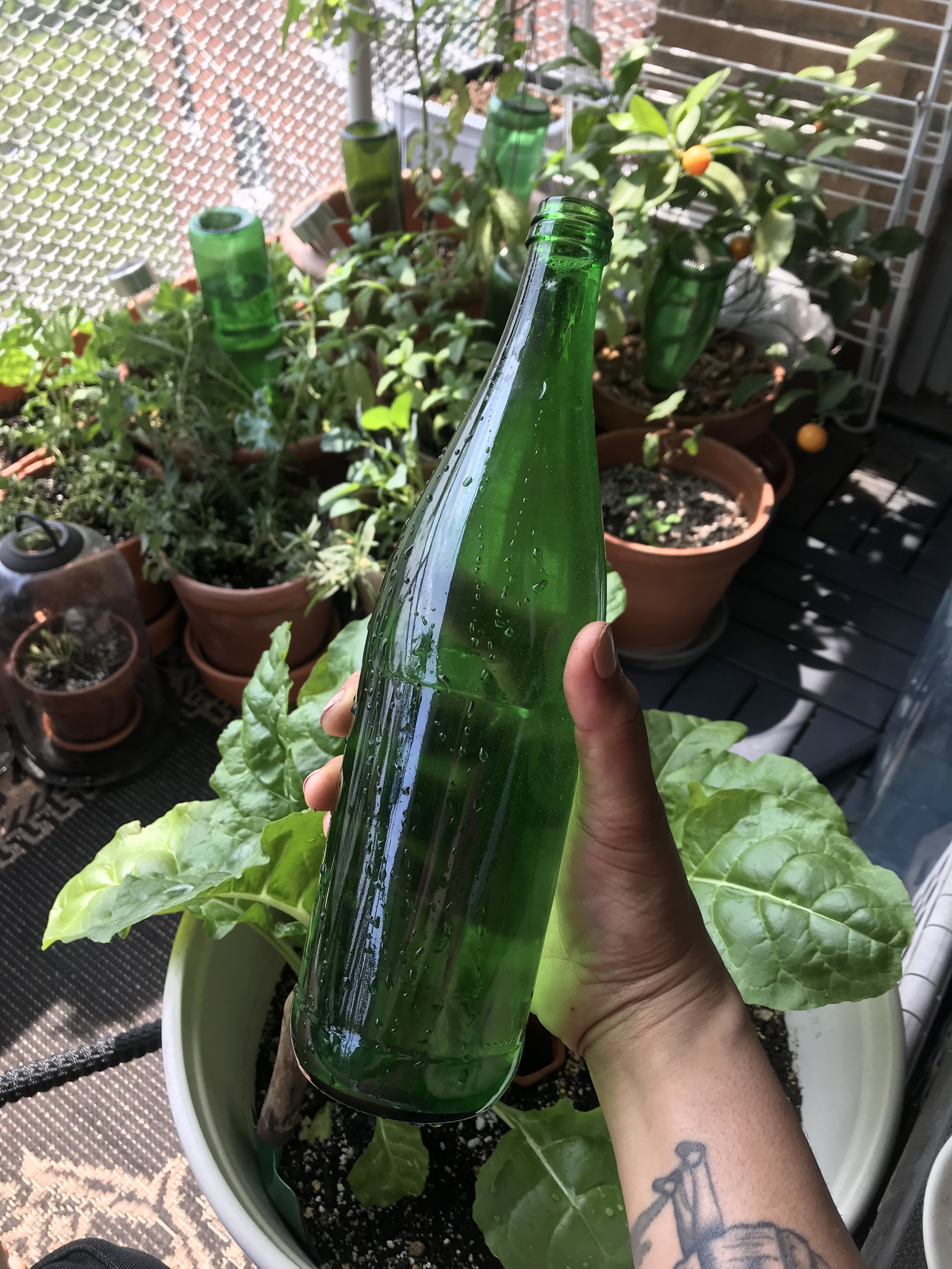Vacation Plant Care
If you’re reading this, then it’s likely that you follow me on Instagram and you know how many plants I own. Whenever I go away even just for a weekend, I’m often asked how I care for my plants while I’m gone. What I do with my plants while I’m away depends on two things: How long am I gone and what season it is. During the colder months, most of my plants can survive no more than a week between waterings. During the summer months however, my plants tend to need a bit more help due to the heat. This is where my watering tools come in. I use two things in particular and they are described below. Links to where I bought them are available and full disclosure, they are affiliate links.
Hydro Spikes
I will cheat here and have Summer Rayne Oakes of Homestead Brooklyn explain hydrospikes for you. I found out about them through her and everything I know about them I learned through this episode of Plant One on Me. You can purchase the original Hydrospikes here. I have bought cheaper knock-offs through a variety of sellers and have had generally good success with them.
Terracotta Stakes
If you’ve read my previous post about Basic Plant Care, you will have read that my preferred pot of choice is terra cotta because they are porous. Well terra cotta stakes work just because of that. It is recommended that stakes be soaked in water for a good amount of time, some say 15 minutes to half an hour and some say overnight. The stakes are then buried into your plant pot as deep as you possibly can without getting any of the soil inside it. Be careful not to damage your plant’s roots while doing so. Then you fill any long neck bottle with water and insert it upside down into the stake. it’s better to start with freshly watered plants for this. The water from your bottle keeps the terra cotta moist and because it is porous, the soil outside it will wick away moisture from the terra cotta as it needs it. Some have said this keeps gnats and other bugs away since they’re usually attracted to wet soil. Using stakes keeps your topsoil dry while keeping the soil at root level properly moist without it getting too wet, causing your roots to rot.
Do you still need to occasionally water your plants when you have stakes in them?
There’s no fixed answer for this. It depends on the plant. I once experimented with my Bird of Paradise. I kept a stake in its pot with a full bottle of water and stopped watering it altogether. It was fine and alive but it stopped shooting out new growth. When I restarted watering it normally, it gave out new leaves again. On the other hand, I have another plant whose name I do not know that has has a stake in it for over a year and I may have watered it a few times in that span of time and it’s still alive. It depends on how much water your plant needs, really. The stakes can be sufficient enough for some plants and for some, it merely helps you manage them in between your weekly waterings if you’re unable to water as often, specially in the warmer months. Again, it depends on the environment.
I use these from Amazon and chose them for their price and value per quantity. I’m sure others work just as well. They are made from terra cotta so just be gentle with them when turning your bottles over because they will break if you’re rough with them. Breakage seems to be the most common negative feedback in all of the ones I’ve seen on Amazon.
If all else fails, get a sitter.
If I’m leaving for a week or more in the summer, I usually ask a friend to come over to water plants a few times. In the winter, they can survive a little over a week before I need to have someone come. Plants are still a commitment, not unlike pets. Just a little less needy.
I’ve seen other plant parents on Instagram use pop-up green houses with grow lights and humidifiers set on timers while they’re away and they seem to work well for them. If I’m ever unable to get a friend to come over, then I may possibly try that as well.
Extras
These two aren’t required but have been helpful in getting my plants watered since I have so many. I used to haul and repeatedly refill a large watering can just to get everyone properly watered but since I bought this expanding garden hose, my weekly watering time has been cut down significantly because I no longer have to keep running to and from the faucet. I bought a special attachment that I use to attach it to my kitchen sink. You’ll need to figure out what works for your faucet.
Another thing that has helped a lot is this Moisture Meter that I use to check if plants need watering or not. I used to always stick my finger in the soil to check if its dry or still okay. With the number of plants that I have, that quickly turned into a messy affair. This meter tells me if a plant is dry, moist or wet simple by sticking it in the pot a few inches down. This helps the most with plants that are in high shelves or hanging planters. I no longer need to take them down to see if they’re dry or not. I just stick the meter in and I’ll know.
So there, hopefully you learned something helpful today. Happy plant parenting!


















